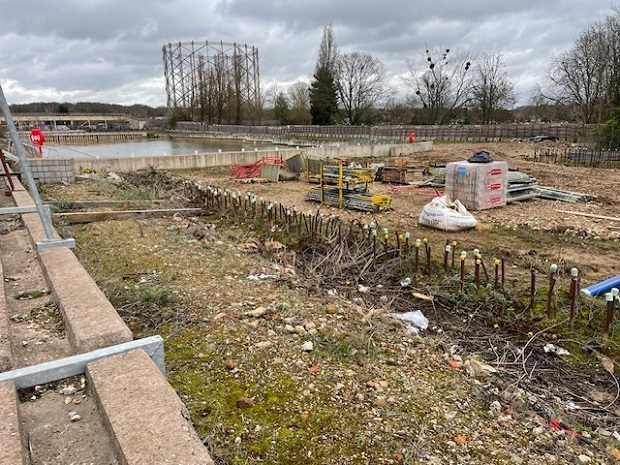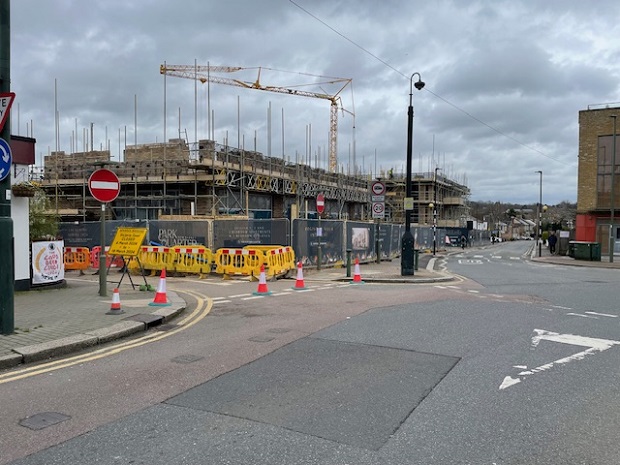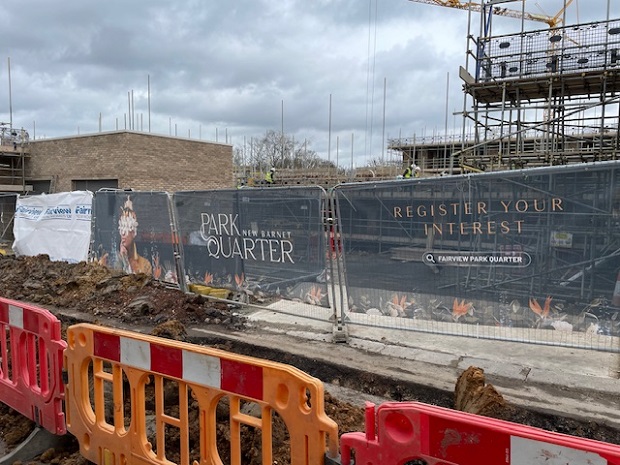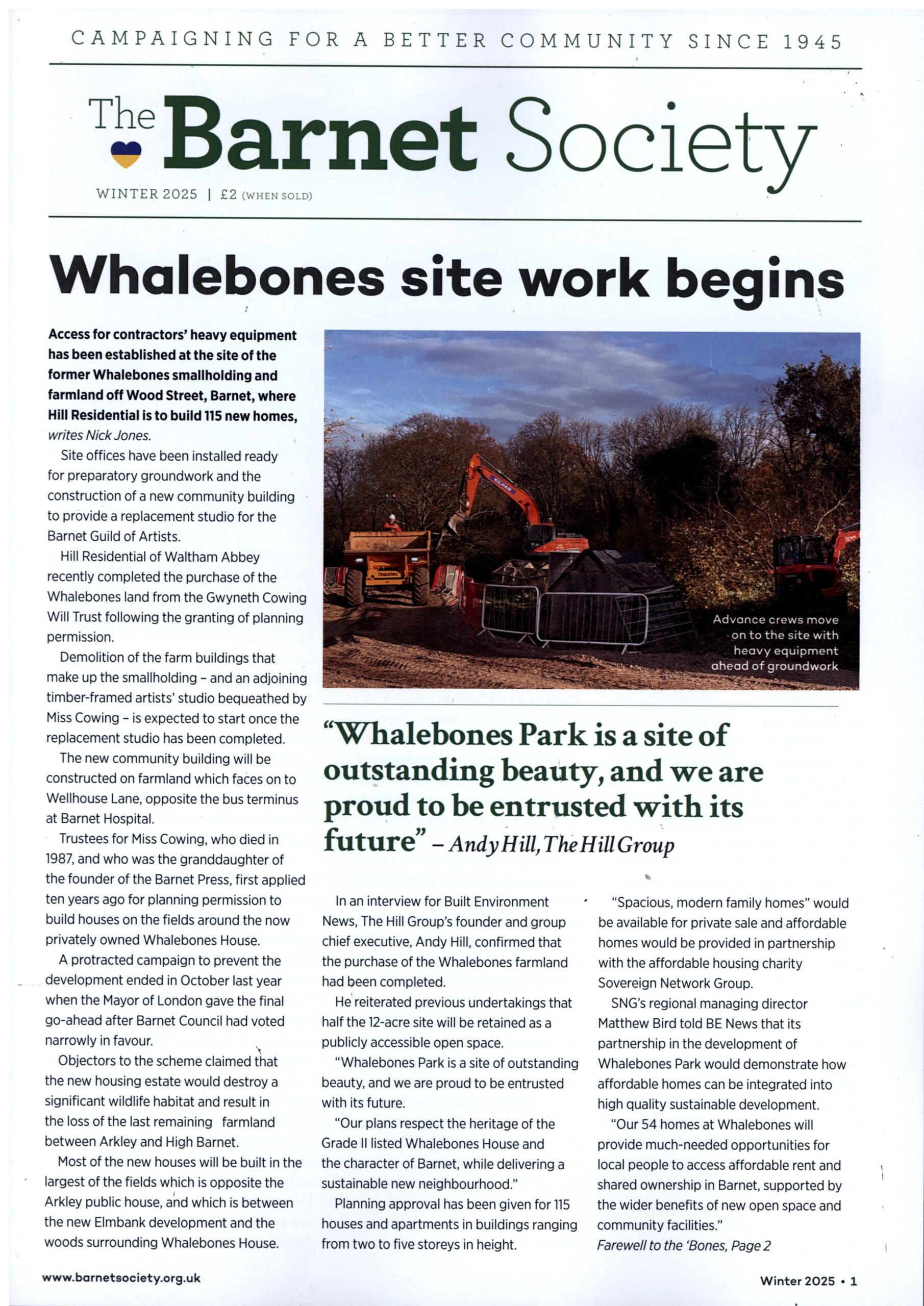Go ahead for Victoria Quarter high-rise flats despite accusations New Barnet scheme disadvantages social tenants

A controversial scheme to build eleven blocks of flats to provide 420 homes on the former gas works site in New Barnet has finally won planning approval after years of heated debate.
Barnet Council’s strategic planning committee agreed the project by five votes to three despite accusations that the controlling Labour group would be forcing social housing tenants to live in flats that would be no more than “absolutely ghastly” little boxes.
Instead of delivering good quality new homes, 25 per cent of the new flats would face possible overheating in the summer with tenants on affordable rents having to rely on expensive ventilation systems to keep cool.
The vote in favour follows years of disagreement as to how to develop the vacant site and determined opposition led by the Save New Barnet campaign.

Citystyle Fairview — which is already well underway with first phase of the Victoria Quarter redevelopment — now has planning permission to build eleven blocks of flats ranging from four to eight storeys in height on the gas works site which is off Albert Road, between the main railway line and the Victoria Recreation Ground.
This ends a long running saga dating back over 15 years with residents and amenity groups mounting fierce resistance to what they fear is an attempt to cram in too many high-rise blocks.
It started when ASDA dropped their 2008 plan to build a new supermarket on the 7.5-acre site.
After four years of negotiation, approval was given for a scheme to build 371 homes – but that failed to make progress and developers tried to expand the scheme to provide 652 flats.
After that plan was rejected, the number was cut back to 539 homes, but that too failed to get approval, lost on appeal, with the developers failing to get that reversed in the High Court.
Fairview then revised the application for a total of 486 homes – 66 of which obtained approval last year and which will be delivered in two four-storey blocks which are already under construction – see above – and which front on to Victoria Road at the junction with Albert Road.
The crucial vote to approve the 420 homes on the empty gas works land was preceded with some bad-tempered exchanges between the three Conservative councillors who opposed the scheme and the controlling group of Labour councillors.
Councillor Richard Cornelius (Conservative) accused Councillor Nigel Young (Labour) chair of the strategic planning committee, of presiding over the approval of a scheme which he said would become the slum of tomorrow and of which the Labour Party could take no pride.
“This is a huge development. It is too big, putting a quart into a pint pot, producing homes which are bad in design, and which are not the way forward.
“Labour cannot have any pride in providing social housing which is absolutely ghastly.”
Councillor Shuey Gordon (Conservative) agreed: “We cannot provide little boxes and then put the social tenants in them. We want good quality lives for people in habitable homes.”
Councillor Young backed the scheme because 140 of the 420 news homes would be affordable and despite fears that some of the flats might be subject to overheating in the summer, the council’s planning officers considered it was a sustainable development.
“It is regrettable that there are some design issues, but we have tried to mitigate them.
“Approval of this scheme is speaking up for people who don’t have a home, for people living in hotel rooms.
“This is a question of balance…the balance is in favour of the scheme, and I am in favour of it.”
Councillor Eva Greenspan (Conservative) forced a vote to refuse the application on the grounds of size, mass, and density. At this point there were the accusations that Labour could take “no pride” in the scheme, but it was approved by five votes to three.
After declaring the result in favour, Councillor Young said he wanted to express his thanks to those in the New Barnet community who had identified concerns about the scheme.
“I do hope the developer will reach out to the community and work with the council’s planning officers to take forward the scheme.”
Approval of the project had been delayed for a month because there was no time to complete the discussion at the February meeting.
The renewed debate revolved around concern that 25 per cent of the new flats did not meet standards for daylight and that those facing the main railway line might be subject to overheating in the summer because it would be too noisy to open windows at night.
An additional concern was that some of the kitchen-diners were entirely enclosed and lacked access to daylight.
Councillor Claire Farrier (Labour) was concerned that tenants paying social rents would be put into flats in the most unattractive parts of the site, which were “right up against the railway line and faced west, where tenants would have to keep windows closed.”
“These flats are at risk of overheating and would use more energy and tenants on social rents would have to pay extra charges.”
Councillor Paul Lemon (Labour) was also concerned that 25 per cent of the homes failed to meet the daylight target and he feared a substantial proportion of those flats would be for tenants in the affordable rent sector.
At this point a planning officer said the council was satisfied that the approach taken by Fairview was correct and steps had been taken to ensure it would be possible to maintain a comfortable temperature all year round.
Residents would be able to open their windows. A computer model had shown if the windows were kept shut for the whole of the night and the flats did require a cooling system, the all-year round energy cost was sufficient and the extra cost was minimal.
Councillor Young proposed – and this was agreed — that one of the conditions for approval would be a requirement for an energy management plan to balance out any additional costs for the 25 per cent of flats which did not meet the daylight guidance and had enclosed kitchens.
Despite this safeguard, Councillor Cornelius said he was still concerned about the many design problems in the development.
“It is very difficult to see where this is going to end up…This scheme relies on computer modelling but the mere fact that mechanical ventilation is required in these new flats, flies in the face our of net zero ambitions.
“If something is being built which is not good, that is not acceptable. We should look again at this huge development.”

Fairview have already started promoting the sale of homes in the two blocks of flats under construction at the junction of Albert Road and Victoria Road. These flats are of one, two and three bedrooms.
Theresa Villiers, the Chipping Barnet Conservative MP, added her criticism to the decision to approve the eleven blocks of flats in the main part of the new Victoria Quarter.
“These high-density blocks are far too tall for a low-rise outer-London suburban area like New Barnet and the quality of the homes proposed is not good enough.
“The developers should have built the scheme for 317 flats for which permission was given in 2017 and which had a broad degree of local acceptance.”
3 thoughts on “Go ahead for Victoria Quarter high-rise flats despite accusations New Barnet scheme disadvantages social tenants”
Comments are closed.


Far too large a development. Forcing people to live in small shoe boxes. We need good quality housing that people can have pride in where they live. These will become slums within 5 years.
This has been a strange wasteland and a real eyesore in the middle of the area for far too long. Will be good to finally see movement and it transformed into an area that will be of some utility.
It bears mentioning that all three (Labour) local East Barnet Councillors opposed and continue to oppose this scheme. We have been working extremely closely with New Barnet Community Association and plan to continue doing so to see how we can ensure that we have the right development in place. We are all very disappointed with the result of the Committee vote.